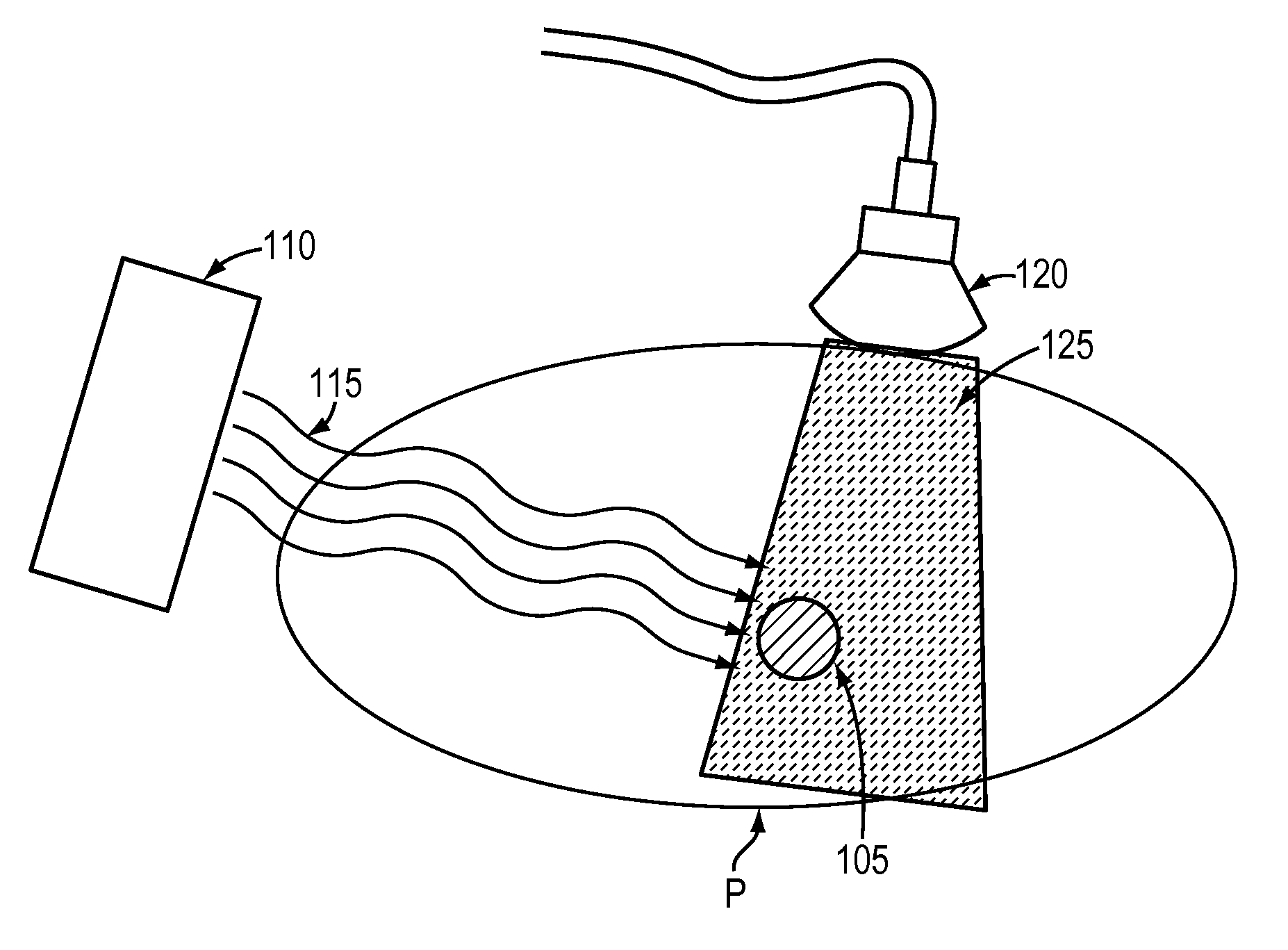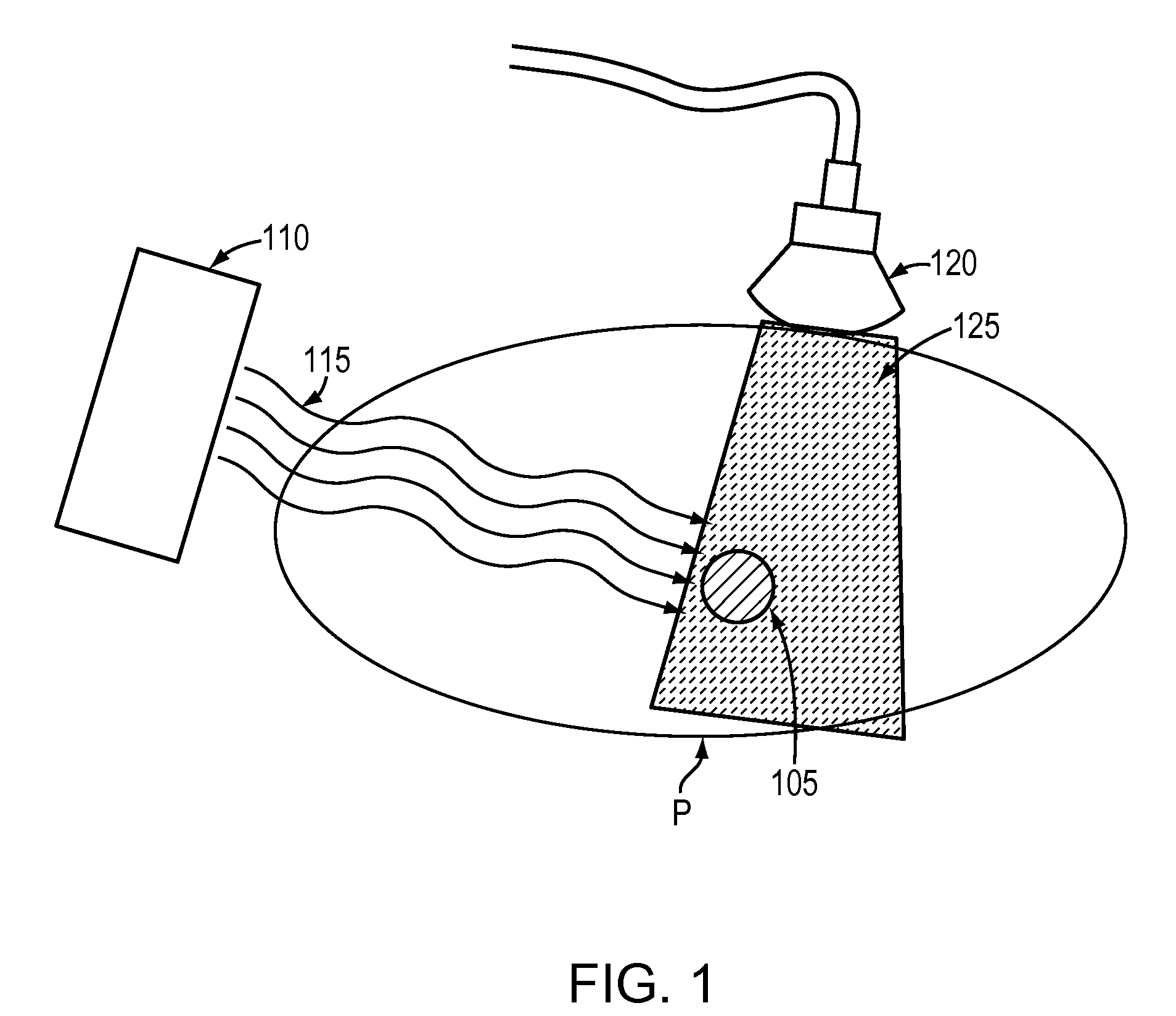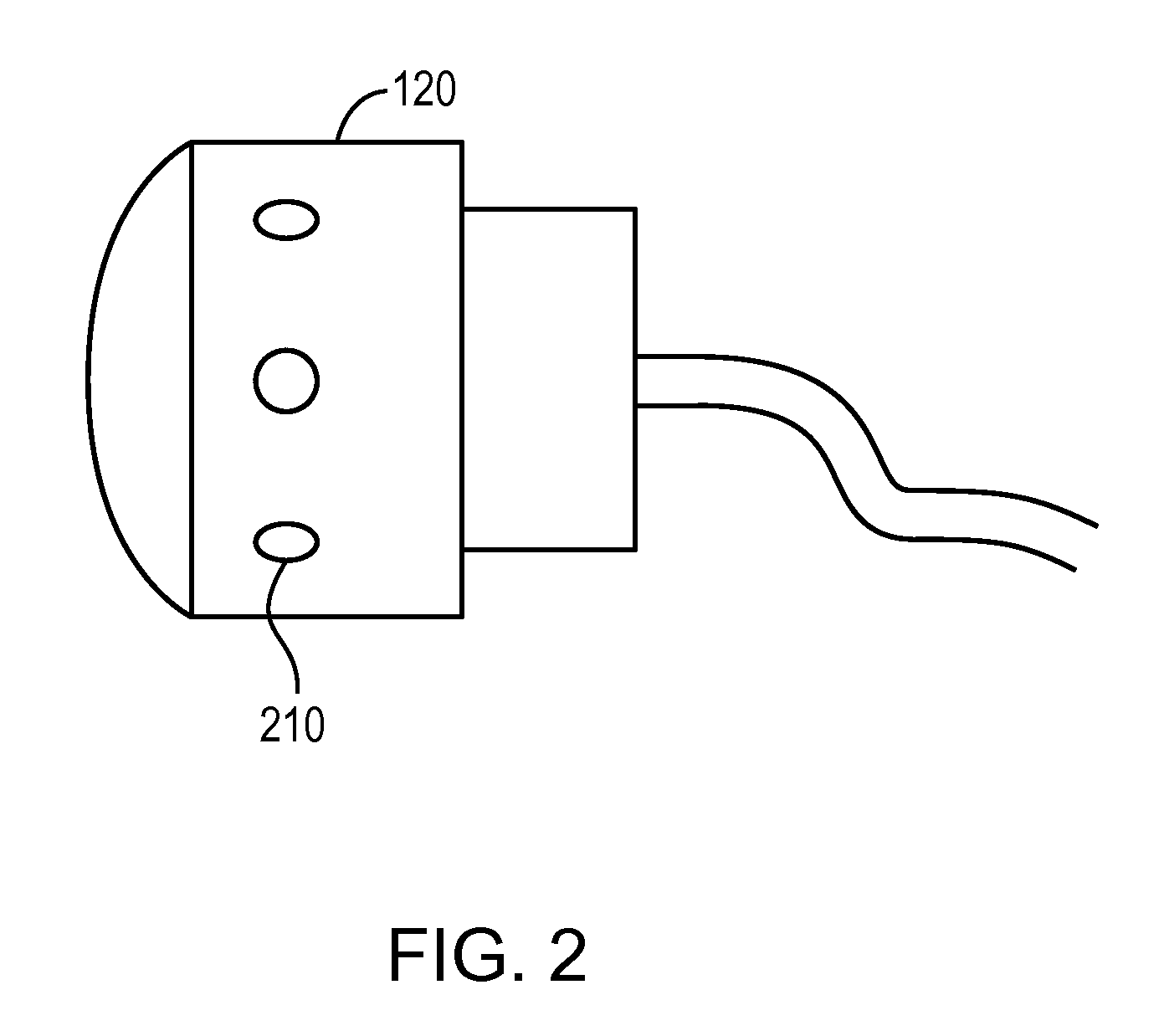Adaptive radiotherapy treatment using ultrasound
a radiotherapy treatment and ultrasound technology, applied in the field of monitoring therapy treatments, can solve the problems of deteriorating the actual delivered dose to the target organ, risks of exposing surrounding sensitive structures to unwanted radiation, and inability to achieve the effect of avoiding potential radiation damage to the ultrasound prob
- Summary
- Abstract
- Description
- Claims
- Application Information
AI Technical Summary
Benefits of technology
Problems solved by technology
Method used
Image
Examples
Embodiment Construction
[0025]Throughout the following descriptions and examples, the invention is described in the context of monitoring changes to patient anatomy during treatment delivery, and / or monitoring and measuring the effects of radiotherapy as administered to a lesion or tumor. However, it is to be understood that the present invention may be applied to monitoring various physical and / or biological attributes of virtually any mass within or on a patient in response to and / or during any form of treatment. For example, the therapy can include one or more of radiation, cryotherapy, or any other treatment method.
[0026]Referring to FIG. 1, one or more ultrasound scans are acquired during the delivery of radiotherapy treatment, which is typically given in many fractions over an extended period of time. For example, an ultrasound scan is taken of a target organ or lesion 105 within the illustrated region R of the patient. Radiotherapy treatment is administered to the lesion 105 using, for example, an e...
PUM
 Login to View More
Login to View More Abstract
Description
Claims
Application Information
 Login to View More
Login to View More - R&D
- Intellectual Property
- Life Sciences
- Materials
- Tech Scout
- Unparalleled Data Quality
- Higher Quality Content
- 60% Fewer Hallucinations
Browse by: Latest US Patents, China's latest patents, Technical Efficacy Thesaurus, Application Domain, Technology Topic, Popular Technical Reports.
© 2025 PatSnap. All rights reserved.Legal|Privacy policy|Modern Slavery Act Transparency Statement|Sitemap|About US| Contact US: help@patsnap.com



